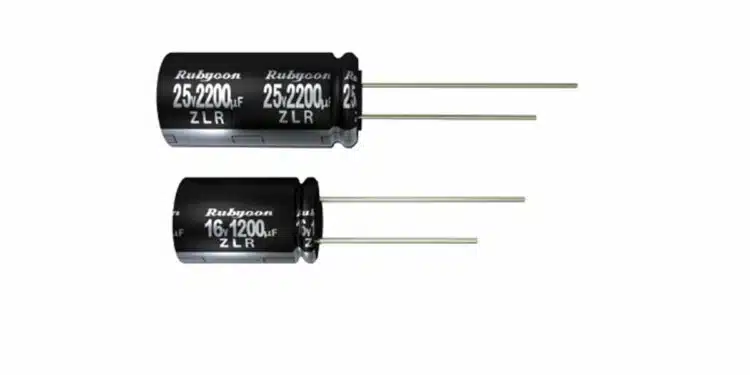Rubycon announce ZLR series radial aluminum electrolytic capacitors with higher capacitance, lower impedance, and higher ripple current parts.
This series achieves industry leading top specifications, allowing for smaller designs, higher performance, and lower costs.
Used in a wide variety of applications, aluminum electrolytic capacitors are often used for smoothing purposes in the input and output of power supplies. Output smoothing capacitors require low ESR resistance and high ripple current.
In applications with large load fluctuations, high capacitance may also be required to prevent momentary voltage drops in the power supply output.
In 2001, we launched our ZLH series of radial lead-type aluminum electrolytic capacitors for power supply output smoothing. These small-sized capacitors have a long life, low impedance, and high ripple performance. For over 20 years, the ZLH series has been the standard in power supplies across numerous applications for output smoothing capacitors.
The ZLR series uses a new, high-performance electrolyte that offers higher conductivity, achieving even lower impedance than the ZLH series. This is thanks to our unique ethylene glycol and water blending technology that we have cultivated over many years. By combining this high-performance electrolyte with an airtight sealing material, the product maintains the same long-life performance as the ZLH series.
By increasing the magnification of the electrode foil, the ZLR series has achieved up to approximately 40% higher capacitance, approximately 10% higher ripple, and lower impedance compared to the ZLH series of the same size, achieving industry-leading specifications.































